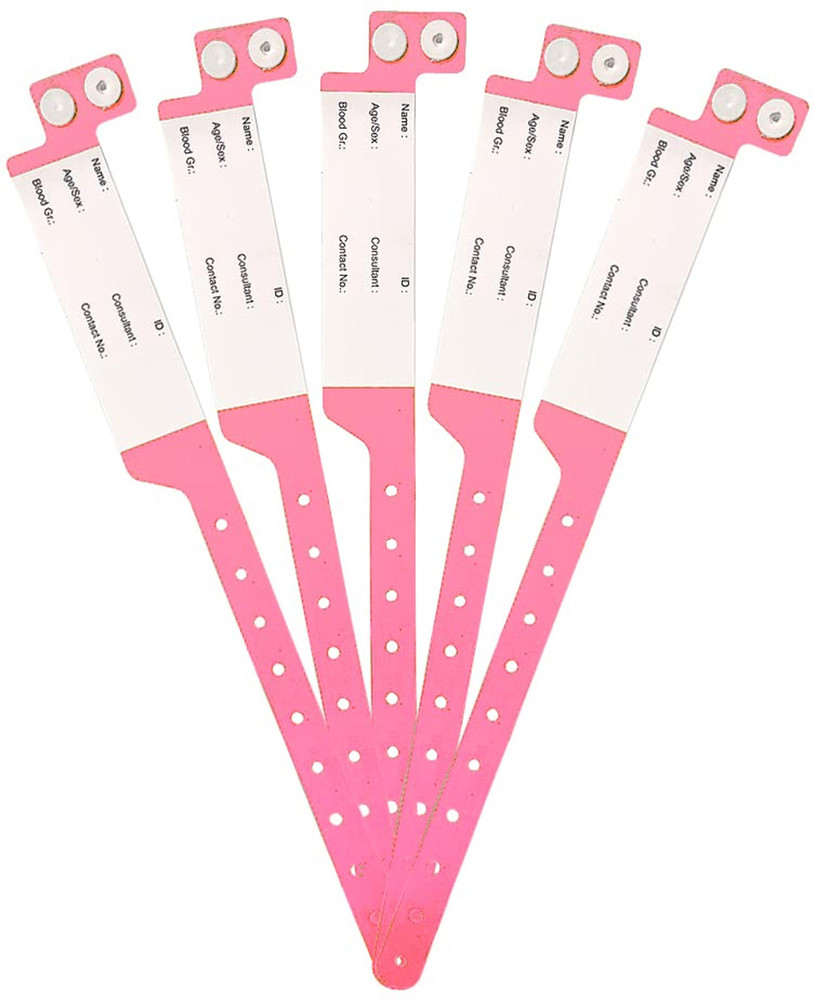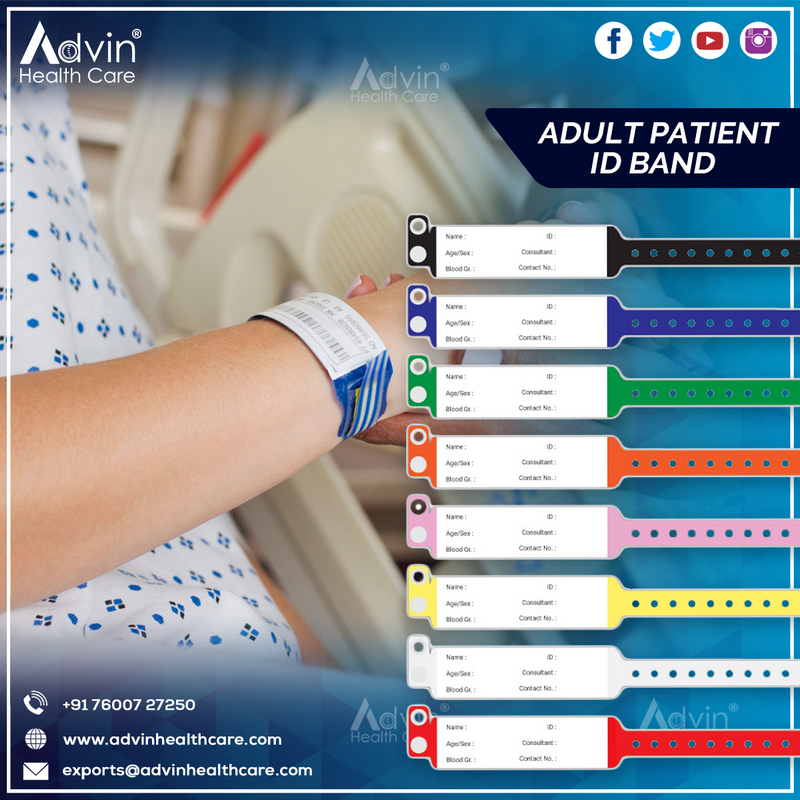How to Ensure the Security and Precision of Patient Information with a Patient Identification Band
How to Ensure the Security and Precision of Patient Information with a Patient Identification Band
Blog Article
Exploring the Different Kinds Of Patient Identification Band Utilized in Medical Facilities
In the complex world of health care, the vital function of Patient Identification bands often goes undetected. These bands, differing from simple paper wristbands to innovative RFID bands, create the foundation of Patient safety protocols, guaranteeing accuracy in Patient Identification. The large diversity of these bands, each with its distinct advantages and restrictions, is frequently neglected. As we navigate with this topic, one may gain insight into the subtle complexities and important importance of such bands in clinical centers.
Comprehending the Importance of Patient Identification Bands
While they may appear like mere devices, Patient Identification bands play an essential role in clinical centers. These bands offer as a crucial tool for verifying Patient identity, preventing clinical errors associated with misidentification. The bands generally show essential details such as the Patient's name, age, blood group, and any kind of known allergic reactions. They enable medical care specialists to promptly access this important information, consequently helping with punctual and precise clinical treatment. Patient Identification bands additionally aid in enhancing administrative tasks, making certain exact record-keeping and billing. Regardless of their simpleness, these bands symbolize the principle of Patient safety, a keystone of top quality healthcare. Without them, the risk of clinical errors, and subsequently, Patient injury, might significantly enhance.
Conventional Paper Wristbands: Their Use and Limitations
Standard paper wristbands have been a staple in Patient Identification across different medical centers. While their use prevails, they nurture particular constraints that may impact their efficiency in Patient monitoring. This area will certainly concentrate on the extent of their application and the intrinsic downsides related to their usage.
Paper Wristbands: Use Extent
In the realm of Patient Identification, paper wristbands have long held a vital role. These bands are normally utilized in outpatient setups, where the Patient's remain is momentary. The wristbands have crucial details such as the Patient's name, date of birth, and a special Identification number. This simple, yet effective system, permits medical specialists to rapidly and properly recognize individuals, ensuring the right treatment is provided. Paper wristbands are likewise made use of in emergency situations, where quick Identification is critical. Their usage includes occasions like blood donation drives and mass inoculation programs, better stressing their flexibility. In spite of improvements in technology, the humble paper wristband stays a economical and trustworthy option for Patient Identification in different health care scenarios.
Limitations of Paper Wristbands
Despite their extensive use, paper wristbands are not without their downsides. Their physical longevity is just one of the considerable restrictions. Exposure to water, sweat, or misuse can make them unreadable or even create them to disintegrate. In enhancement, paper wristbands often lack the technological capacities of even more modern-day alternatives, such as barcoding or RFID chips, limiting their functionality to simply presenting written information. The inability to upgrade or change the information on the wristband is one more drawback. Moreover, if the details is handwritten, legibility can be compromised, bring about prospective misidentification. Paper wristbands can create discomfort or skin inflammation to some clients, especially when used for extensive periods.
Barcoded Wristbands: Innovations in Patient Identification
While Patient Identification has long been a vital facet of medical care, the advent of barcoded wristbands indicates a considerable jump forward. These bands take advantage of the simpleness of barcoding modern technology, enabling for Patient information to be quickly scanned and accessed. They boost the speed check my blog and precision of Patient Identification, lowering the threat of medical mistakes related to misidentification.
Radio Regularity Identification (RFID) Bands: a Step In The Direction Of Futuristic Health Care
The evolution of Patient Identification bands has actually brought regarding the development of Radio Regularity Identification (RFID) Bands (patient identification band). These cutting-edge tools present vital advantages for health care facilities, using an extra effective and highly progressed methods of Patient Identification. The implementation of RFID in health care is a substantial action towards a much more futuristic technique to Patient monitoring and security
Comprehending RFID Bands

RFID Bands: Trick Benefits
Accepting a future where modern technology and health care merge, superhigh frequency Identification bands provide several key advantages. Mostly, these bands boost Patient safety and security by giving accurate, rapid Identification, thus lowering clinical mistakes. RFID bands can keep a substantial quantity of Patient information, including case history and allergies, enabling personalized care. They likewise enhance administrative tasks, as the automated data entrance changes hand-operated procedures, enhancing effectiveness and lowering paperwork. RFID bands supply real-time monitoring of patients, critical in high-risk environments such as surgical treatment or intensive treatment. These bands are resistant and resilient to environmental elements, making certain constant capability. On the whole, RFID bands represent a substantial innovation in Patient Identification innovation, benefiting both individuals and medical care companies.
Applying RFID in Medical Care
As we enter a technically advanced period, the implementation of RFID bands in medical care comes to be increasingly important. These bands supply a seamless means to track and identify individuals, guaranteeing their safety and security and improving performance in therapy procedures. RFID bands use countless advantages over typical Identification techniques. They can save a large quantity of data, consisting of the Patient's case history and therapy plans, which can be conveniently accessed by healthcare suppliers. This information assists medical professionals make informed decisions regarding the Patient's treatment strategy. RFID bands lower clinical mistakes by supplying exact Patient Identification, which is vital in preventing misdiagnosis or incorrect medication management. Hence, the execution of RFID bands is a significant action towards enhancing Patient safety and medical care delivery.

Color-Coded Wristbands: Assisting in Quick and Accurate Diagnosis
In the busy atmosphere of a clinical facility, color-coded wristbands have emerged as important useful reference devices for swift and accurate Identification of a client's medical problem. These wristbands, put on by people, bring details shades that correspond to various medical conditions or statuses. This system is made to use prompt visual cues to medical care providers, boosting Patient safety and security and care quality.
Strategies for Reliable Execution and Monitoring of Patient ID Bands
Accomplishing optimal use of Patient Identification bands necessitates a well-structured approach for their application and monitoring. The very first step entails training all wellness personnel on the importance of correctly applying and reviewing these bands. Health centers need to standardize the usage of ID bands throughout all departments, ensuring uniformity and lowering discrepancies. Regular audits should be carried out to verify adherence to plans and to fix any type of incongruities. Patient education is also critical; people have to understand the function of the bands and the demand for their continuous wear. patient identification band. It's vital to have a back-up strategy in location, such as barcode scanning or biometrics, to guarantee that Patient Identification is never endangered.
Final thought
Patient Identification bands are crucial in medical centers to make certain security and precision. Effective execution and monitoring of these bands can substantially reduce medical mistakes, boost effectiveness, and enhance overall Patient care.
These bands, differing from easy paper wristbands to innovative RFID bands, develop the backbone of Patient safety methods, making certain precision in Patient Identification.The advancement of Patient Identification bands has brought concerning the introduction of Radio Frequency Identification (RFID) Bands. Overall, RFID bands stand for a substantial advancement in Patient Identification innovation, profiting read what he said both patients and healthcare companies.
RFID bands reduce medical mistakes by supplying accurate Patient Identification, which is important in preventing misdiagnosis or wrong medication management. Patient education is additionally crucial; clients need to comprehend the objective of the bands and the need for their consistent wear.
Report this page